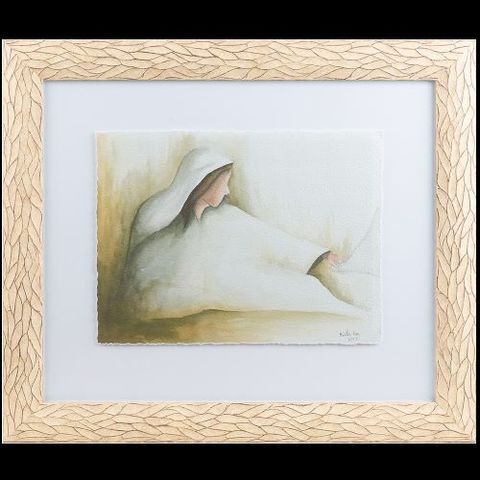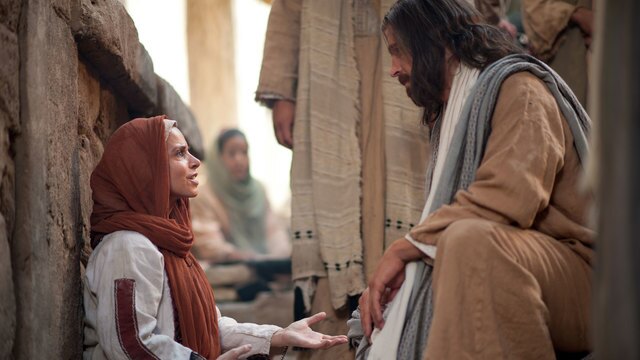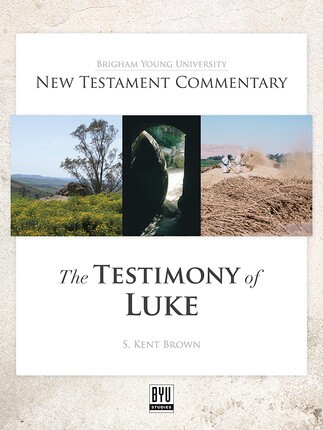Arranging the Pieces
We begin with the unnamed, unknown persons in this story—the crowd. If modern Middle Eastern towns are a gauge, the crowd that followed Jesus was likely made up of men and, perhaps, a few boys who had squeezed in among the adults. If women or girls were present, we expect that they did not join the throng. Instead, typically, they hung back. This observation alone underscores the bravery and determination of the woman, unnamed in the accounts, who pushed her way into the clump of male bodies and reached out for Jesus’s clothing to gain relief.
The miracle occurred in Capernaum, a town with dark igneous rock houses and narrow streets that lay on the northern shore of the Sea of Galilee and straddled an east-west route that connected the territories of Herod Antipas and his brother Philip (Luke 3:1). On this road, just east of town, sat the customs office that employed Levi, also known as Matthew, whom Jesus called to serve as one of the Twelve (Matthew 9:9; Luke 5:27–28).
Walking to Jairus’s Home
Jesus’s healing of the woman with the issue of blood is forever entwined in our minds with the raising of a 12-year-old girl from death, the daughter of a synagogue official named Jairus, or Ya’ir in Hebrew, and his wife. The two stories are linked to one another in each of the Gospels that record them (Matthew 9:18–26; Mark 5:21–43; Luke 8:40–56). Possibly at the urging of his wife, Jairus went in search of Jesus, finding Him almost as He stepped off a boat with the Twelve in tow. Falling at Jesus’s feet, Jairus begged the Master to come to his home because his daughter lay at the door of death. Jesus agreed.
People of the town who were out and about, knowing of Jesus’s special powers, joined the group heading to Jairus’s home. It was into this crowd, tightened by the narrow streets, that the woman plunged. We can forgive her for rendering those whom she touched ritually unclean. In fact, they may not have known what was happening as she squirmed to reach Jesus. According to the Mosaic law, an open, running sore made a person unclean. Further, anyone or anything that the person touched became unclean (Leviticus 15:2–15, 19–30). Hence, it is reasonable that, at that time of her life, she had contact with few persons, including family members, and attended no festivals or celebrations. Said another way, a person would not invite her into his or her house. Ever.
This woman obviously knew of the powers that Jesus carried, for they had been manifest in a number of settings around the town. No secrets there (Mark 5:27, “she had heard of Jesus”). Screwing up her courage born of desperation after 12 years of seeking and finding no relief, she went to find Him—an act of faith and hope. But what she came upon was a cluster of men thronged around Him all heading to Jairus’s house along a tight, earthen street. What to do? We all know what she did. She squeezed through the crowd and touched the hem of His garment. Instantaneously, “her issue of blood stanched,” something that she sensed (Mark 5:29, “she felt in her body that she was healed of that plague”). In the next instant, Jesus stopped and said, “Who touched me?” (Luke 8:44–45).
Actually, the woman did not touch Jesus. But the result was the same. She touched a piece of His clothing (Mark 5:30), an item that bore sacred ties. The piece that she grabbed was a garment with fringe or a hem on it, likely the garment mandated for men by the law of Moses to remind them to keep the Lord’s commandments (Numbers 15:38–40; Deuteronomy 22:12). Such a hem was also to appear on the garments of priests (Exodus 28:33–34). We see a further, deeper link to holiness in the vision of Isaiah. In the report of his call, Isaiah began by writing, “I saw also the Lord sitting upon a throne, high and lifted up, and his train filled the temple” (Isaiah 6:1). The term translated “train” is the word for hem, that is, the hem of God’s garment. On a spiritual level, the woman had in effect touched God’s garment, worn by his Son, and was healed immediately (also Matthew 14:35–36). But there is more to the story.
Jesus and the Now-Healed Woman
As we all know, Jesus’s question surprised the disciples, and they said so. After those who were squeezed closest to Jesus denied touching Him, Peter and others said, “Master, the multitude throng thee and press thee” (Luke 8:45). After all, they were jammed into a very narrow space. But Jesus persisted. “Somebody hath touched me: for I perceive that virtue is gone out of me” (Luke 8:46). The noun translated “virtue” is the Greek word for power, dynamis. This second utterance of Jesus coaxed the woman out of the crowd, for she “saw that she was not hid” (Luke 8:47). This is exactly where Jesus wanted her—in the open, in the public square, in full view of others. After all, He understood that almost everyone in the town knew of her condition. And, because customarily people in that society thought that those who carried some abnormality were cursed of God—as in the case of Elisabeth, the previously barren mother of John (Luke 1:25)—Jesus wanted the woman’s new, whole status to be known in the wider community. She was no longer to be avoided and, worse, scorned.
Importantly, when she spoke to Jesus she was bearing her testimony before all in the gathering about Jesus’s divine powers, “how she was healed immediately” (Luke 8:47). Besides regaining her place of acceptance in the town, in an instant, she was restored to her waiting family, to her patient friends, to her lost synagogue, and to her beloved temple. The lesson? The driving force beneath her actions had been her hope-filled faith in Jesus’s powers, and He affirmed: “Daughter, be of good comfort: thy faith hath made thee whole; go in peace” (Luke 8:48). More lies beneath the verb rendered “hath made thee whole” than meets the eye. The verb means “to save.” It has to do with salvation. Her faith had brought her to that divine door, now open to her.
Lead image from ChurchofJesusChrist.org.
For further information, see S. Kent Brown, The Testimony of Luke, The BYU New Testament Commentary [Provo, Utah: BYU Studies, 2015.]
This beautiful painting, Faith to Be Healed,by Kate Lee brings us a very private view into that special moment when faith was strong enough heal by touching the hem of the Savior's clothing. Printed on paper with torn edges, under glass, floating, and framed with a warm and wide scraped style moulding. Available at Deseret Book stores and deseretbook.com.



